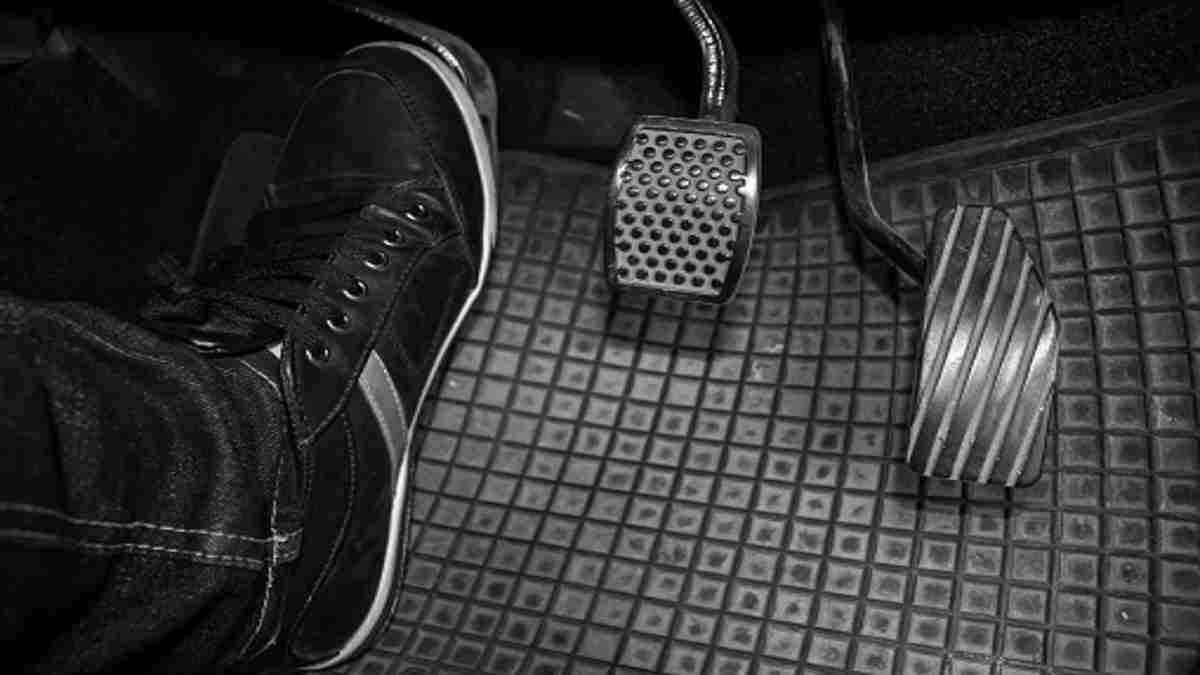The feeling is unforgettable: you’re driving down the road, minding your own business, and suddenly the car feels like it’s lost its muscle. The engine roars, but the vehicle barely moves. You look down and see it – the clutch pedal has gone limp, resting on the floor. Panic sets in: what just happened? Is your car about to seize up? This is a situation no driver wants to face, but understanding what went wrong and what to do about it can make a world of difference. Let’s dive into the world of clutch failures, understand why your clutch pedal might have dropped to the floor, and equip you with the knowledge needed to navigate this challenging scenario.

Image: www.world-today-news.com
The clutch, in essence, is the silent hero of your manual transmission. It acts as a bridge between the engine’s power and your car’s wheels, allowing you to smoothly engage and disengage gears. When the clutch pedal drops to the floor, it’s a sign that this critical link has been broken, and it’s time to troubleshoot.
Understanding the Clutch and its Functions
Before we delve into the details of a dropped clutch, let’s understand the intricate components of this essential system. The clutch assembly consists of:
- Clutch Pedal: The pedal you press with your foot, connected to the clutch master cylinder.
- Clutch Master Cylinder: A hydraulic component that converts the pressure from your foot into fluid pressure.
- Clutch Slave Cylinder: Another hydraulic component that receives fluid pressure and pushes on the clutch fork.
- Clutch Fork: A lever that connects the slave cylinder to the clutch release bearing.
- Clutch Release Bearing: A bearing that presses against the pressure plate when you depress the clutch pedal.
- Pressure Plate: A plate that holds the clutch disc against the flywheel.
- Clutch Disc: The friction material that is sandwiched between the flywheel and pressure plate.
- Flywheel: A heavy disc attached to the crankshaft, which turns with the engine.
When you press the clutch pedal, the master cylinder pushes fluid into the slave cylinder, which moves the clutch fork. The release bearing then presses against the pressure plate, separating the clutch disc from the flywheel, allowing you to shift gears. When you release the pedal, the pressure plate pushes the clutch disc back against the flywheel, transferring power from the engine to the transmission.
Reasons Why Your Clutch Pedal Might Drop to the Floor
Now that we understand the mechanics of the clutch, let’s explore the common culprits behind a dropped clutch pedal.
- Hydraulic System Problems: This is the most frequent reason for a dropped clutch. The hydraulic system relies on fluid pressure to move the clutch fork, and if there’s a leak or air in the system, the pedal can lose its resistance.
- Worn or Damaged Clutch Disc: Over time, the friction material on the clutch disc wears down. This can lead to slippage, causing the pedal to feel mushy, and eventually, it may fail completely.
- Broken or Worn Clutch Release Bearing: As the release bearing wears out, it can become noisy or even break, preventing the clutch from disengaging properly.
- Faulty Clutch Slave Cylinder: This component can become faulty due to wear or damage, failing to transfer the fluid pressure effectively.
- Clutch Master Cylinder Failure: Just like the slave cylinder, the master cylinder can malfunction, preventing proper fluid flow.
- Worn or Damaged Clutch Cable (Manual Transmissions): While less common in modern cars, older vehicles with manual transmissions can experience clutch cable problems. The cable can become frayed, worn out, or even snap, preventing the clutch from disengaging.
What to Do When Your Clutch Pedal Drops to the Floor
Here are the steps you should take when you encounter a dropped clutch pedal:
- Stay Calm: Panic won’t help. Take a deep breath and assess the situation.
- Pull Over Safely: Find a safe spot to stop your car, ensuring you’re not blocking traffic or endangering yourself or others.
- Turn off the Engine: This will prevent further damage to the drivetrain.
- Assess the Situation: Check the clutch pedal for any obvious signs of damage or wear, and listen for any strange noises coming from the engine or transmission.
- Contact a Mechanic: Don’t attempt to repair the clutch yourself. A qualified mechanic can diagnose the problem and fix it correctly.

Image: fixingengines.com
Getting Your Clutch Fixed: The Road to Recovery
Once you’ve safely pulled over and contacted a mechanic, the repair process will typically involve:
- Diagnosis: The mechanic will thoroughly inspect the clutch system, starting with the hydraulic lines for leaks, then checking the clutch master and slave cylinders. They’ll also inspect the clutch disc and release bearing.
- Replacement: Depending on the issue, the mechanic will likely replace some or all of the clutch components, including the clutch disc, pressure plate, release bearing, slave cylinder, and possibly the master cylinder as well.
- Bleeding the Hydraulic System: After any repairs or replacements, the hydraulic system must be bled to remove any air bubbles that may have entered.
- Road Test: Once the repairs are complete, the mechanic will road test the vehicle to ensure the clutch is functioning properly.
Addressing the Underlying Cause
While a dropped clutch pedal is a frustrating predicament, it’s crucial to understand that it’s often a symptom of a deeper problem. The underlying issue may be as simple as a minor leak in the hydraulic system or a worn-out release bearing, but it could also be a sign of more serious problems with the clutch assembly or even the transmission. By addressing the root cause promptly, you can prevent further damage and ensure your vehicle operates smoothly.
Clutch Dropped To The Floor When Driving
Conclusion: Back on the Road with a Healthy Clutch
Experiencing a dropped clutch pedal can be a stressful experience, but with the right knowledge and action, you can navigate this challenging situation with confidence. Remember to stay calm, pull over safely, and contact a qualified mechanic. Understanding the critical role of the clutch and its components helps you appreciate the importance of regular maintenance and timely repairs to prevent future issues. By investing in a healthy clutch, you ensure smooth and reliable performance, putting you back on the road with peace of mind.






